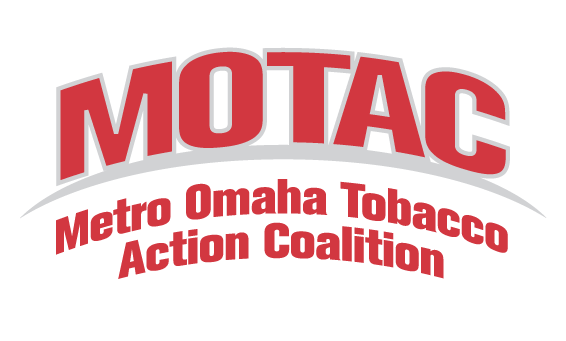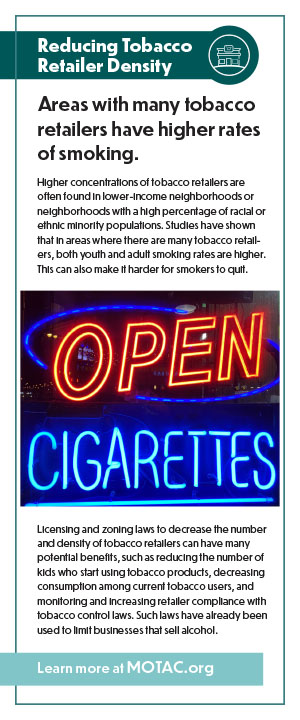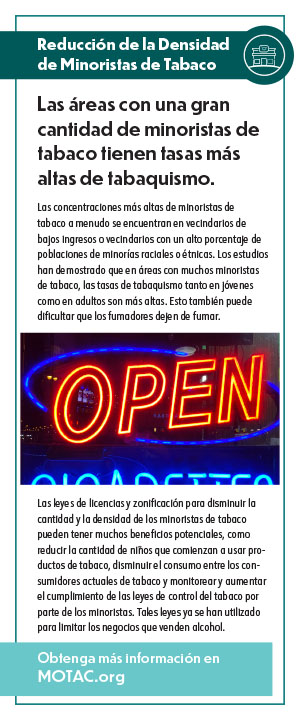Reducing Tobacco Retailer Density
Areas with many tobacco retailers have higher rates of smoking.
Higher concentrations of tobacco retailers are often found in lower-income neighborhoods or neighborhoods with a high percentage of racial or ethnic minority populations. Studies have shown that in areas where there are many tobacco retailers, both youth and adult smoking rates are higher. This can also make it harder for smokers to quit.
Licensing and zoning laws to decrease the number and density of tobacco retailers can have many potential benefits, such as reducing the number of kids who start using tobacco products, decreasing consumption among current tobacco users, and monitoring and increasing retailer compliance with tobacco control laws. Such laws have already been used to limit businesses that sell alcohol.
How does it work?
- Have state and local governments require those who want to sell tobacco to obtain a license.
- Limit the sale or distribution of tobacco products to specific zones. Zoning laws can also establish density or proximity restrictions between tobacco retailers.
MOTAC is currently working to educate the community about the importance of limiting access to tobacco products. We encourage you to support tobacco licensing and zoning initiatives.
Contact us

